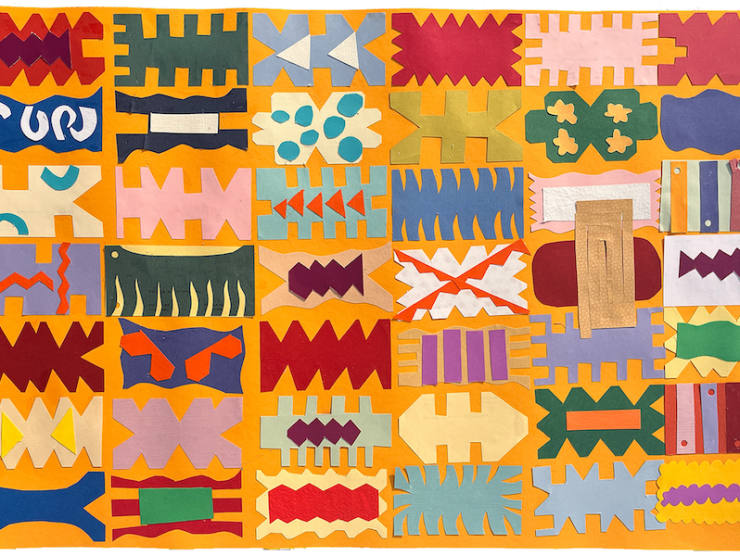
Featuring Christopher Anders, Austin Brague, James Enos, Annie Rose Macer, Adam Richards, Doug Wing, David Wohlford
Featuring Jerry Brown, Justin McCarthy, Carl Block, Chester Hewell, Berry Horton, Micahel Ledford, Wilbur Rouson, Purvis Young
Jerry Brown (1942-2016)
Jerry Brown was an American folk artist and traditional stoneware pottery maker who lived and worked in Hamilton, Alabama. He was a 1992 recipient of a National Heritage Fellowship from the National Endowment for the Arts and a 2003 recipient of the Alabama Folk Heritage Award. His numerous showings included the 1984 Smithsonian Festival of American Folklife with his uncle, potter Gerald Stewart.
Despite use of some modern equipment such as an electric kiln for firing some types of glazes and use of powered throwing wheels, he continued to use traditional methods such as digging his own clay, maintaining a mule to power his pug mill and firing most of his work in a brick kiln.
Other Brown family traditions include the use of a chicken feather to apply some of the glazing patterns, the use of broken pots for teeth in the face jugs, the practice of a two piece method for large vessels and the use of wheel and handshaping techniques for complex pieces instead of slip casting.
Carl Block (n.d.)
Carl Block is a self-taught potter from Waxahachie, Texas. Influenced by the Southern tradition of face jug making, Block combines his love color, local Texas and Mexican culture with his own imagination and terra-cotta clay to create these beautiful contemporary face jugs.
Justin McCarthy (1891-1977)
Justin McCarthy grew up in Hazleton, Pennsylvania, son of a wealthy newspaper editor. He traveled to Europe with his family in 1907, where a visit to the Louvre inspired him to paint. His father died just a year later, however, and the family lost its money. McCarthy attended law school in Pennsylvania, but his failure to pass the bar exams led to a nervous breakdown, and he spent five years in a mental hospital. While he was recovering, his mother encouraged him to draw, and he created images of movie stars, comic strips, and sporting events. He spent the rest of his life living in the family mansion, growing and peddling vegetables and selling his paintings. After his mother died, the house fell into disrepair and McCarthy lived in just two rooms, filling the rest with stacks of unsold paintings.
Chester Hewell (1950-)
Double Handle Face Jug., 1955
Signed and Stamped.
Ash glaze. 10”h.
$500-$900
Chester Hewell (b. 1950)
In 1850, Nathaniel Hewell (1832-1887), a Barrow County farmer, turned his pottery-making into a side-business, producing tableware and utilitarian pieces such as butter churns, jars, and jugs during the Civil War. Throughout the Depression, northeast Georgians depended on Hewell’s Pottery and other family-run potteries to produce glazed kitchen wares. The advent of commercial dairies and refrigeration cut into that demand, and the family began focusing on the flowerpots that had been, to that point, a small part of the business. Soon they were serving everything from neighborhood hardware stores to big box building supplies with strawberry jars, jack-o’-lanterns, and unglazed terra-cotta planters in every imaginable size.
But by the 1980s, Chester Hewell (born 1950), the current patriarch whose pottery-making has been halted by poor health, began to feel the powerful pull of family history. He built a wood-burning tunnel kiln— a stone’s throw from their gardenware factory—and revived the making of alkaline-glazed (ash-glazed) stoneware that his ancestors had started with during the Civil War.
Berry Horton (1917 - 1987)
Berry Horton was an African-American artist who lived and worked in Chicago. He was closely involved with the South Side Community Art Center, a WPA-sponsored project launched in 1940 to serve the largely African-American neighborhood of Bronzeville on Chicago’s south side. A gifted draftsman, Horton worked in a number of different styles. One mode, which relies on finely drawn contour lines, suggests the influence of Mayan codices, African sculpture, and Pacific Northwest Native American art, as well as a familiarity with Jungian psychology. In a second mode of drawing, involving cross-hatching and sketchier lines, Horton made the racial identity of his subjects as explicit as the sexual nature of their actions. In many drawings he made allusions to Bronzeville’s flourishing gay and lesbian scenes. The private, explicit nature of many of these drawings, which frequently depict intersex and transsexual figures, made them impossible to exhibit during the artist’s lifetime.
After Horton’s death, a portfolio of his drawings was preserved by Susan Cayton Woodson (1918–2013), the prominent African-American art collector and dealer in Chicago. Later, the drawings were acquired from Woodson by Eugene Foney (1950-2020), an influential art dealer, curator and promotor of African-American art. In 2016, a selection of Horton’s drawings was shown at Redbud Gallery in Houston, Texas.
Purvis Young (1943-2010)
Purvis Young was an American artist from the Overtown neighborhood of Miami, Florida. Self-taught, Young's work was often a blend painting/drawing with collaged elements utilizing everyday discarded found objects.Inspired by documentaries, (art)books, American history and spiritual folklore his visual vocabulary was vast; wild horses, urban landscapes, (self) portraits, figures, holymen, angels, warriors, boats, sports, musicians, erotica, processions and incarceration to name but a few.
Wilbur Rouson n.d
Wilbur Rouson was a Chicago policeman, a male model for life drawing classes at the Three Arts Club and an artist. We have a photo of a retirement letter from Mayor Richard M. Daley and photos of the artist modeling for art classes. These works were found at his home in historic Bronzeville.
Wilbur Rouson n.d.
Memory Assemblage, 1999
mixed media collage with paint on panel
signed and dated center
18 3/4"h x 25 3/4"w x 1 3/4"d
$500-$900
$300 each
Nonprofessional Experiments
Callicoon, NY
info@nonprofessionalexperiments.com
nonprofessionalexperiments.com
screen-invert